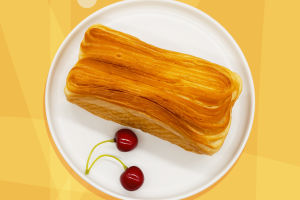Tea, one of the world's most beloved beverages, has a story that begins in the lush tea gardens where skilled hands harvest the leaves that eventually find their way into our cups.
The ancient tradition of tea-leaf picking is an art form that requires precision, knowledge, and a deep appreciation for the delicate leaves.
At the heart of tea-leaf picking are the tea pickers themselves. These skilled individuals play a vital role in determining the quality and flavor of the final tea product. In regions like Darjeeling, India, and Fujian, China, where tea is meticulously hand-plucked, pickers undergo rigorous training to master the craft.
There are various plucking methods employed in tea gardens around the world, each yielding leaves with distinct characteristics. These methods include:
1. Two-Leaves-and-a-Bud: This method involves plucking the youngest and most tender leaves at the tip of the tea bush, along with the bud. These leaves are prized for their delicate flavor and aroma.
2. Fine Plucking: Here, only the bud is plucked, resulting in a tea known for its subtle and sweet taste. White teas, such as Silver Needle, are typically produced using this method.
3. Coarse Plucking: In contrast, coarse plucking involves harvesting older, larger leaves. These teas tend to be stronger in flavor and are often used in black and some green tea varieties.
4. Stem Plucking: Some teas, like kukicha in Japan, are made by plucking the stems of the tea plant. This method creates a unique, slightly nutty flavor.
The timing of tea-leaf picking is crucial. The season, time of day, and even weather conditions can impact the flavor and quality of the tea. For instance, the first flush, or "spring harvest," is highly anticipated in regions like Darjeeling and produces tea with a fresh, floral character. Meanwhile, the second flush, occurring later in the year, results in a more robust and flavorful cup.
In recent years, there has been a growing emphasis on sustainable and organic tea-leaf picking. Many tea gardens have adopted eco-friendly practices, eschewing chemical pesticides and fertilizers in favor of natural and sustainable cultivation methods. This shift not only benefits the environment but also contributes to the distinct flavor profiles of organic teas.
Terroir, a concept borrowed from wine-making, is also relevant in tea production. It encompasses the unique environmental factors of a specific tea-growing region, such as soil composition, climate, and altitude. These factors profoundly influence the character of the tea leaves and contribute to the complexity of flavors that connoisseurs appreciate.
While traditional hand-picking methods continue to be treasured, modern innovations are also impacting tea-leaf picking. Some tea estates employ machinery and automation to increase efficiency, particularly for large-scale production. However, the artistry of hand-picking remains integral to the production of high-quality teas.
From the fragrant oolongs of Taiwan to the smoky Lapsang Souchong of China, the method and timing of tea-leaf picking contribute to the rich tapestry of tea varieties available worldwide. Every cup of tea tells a story of the region, the pickers, and the meticulous care that goes into its creation.
Tea-leaf picking is an intricate and time-honored practice that shapes the world of tea as we know it. It's a journey that begins in the tea gardens, where the skilled hands of pickers pluck tender leaves with precision and care. These leaves, influenced by plucking methods, terroir, and sustainable practices, go on to create the diverse range of flavors and aromas that tea enthusiasts savor in every cup.
The art of tea-leaf picking is a testament to the beauty of craftsmanship and the reverence for nature that continues to define the world of tea.


